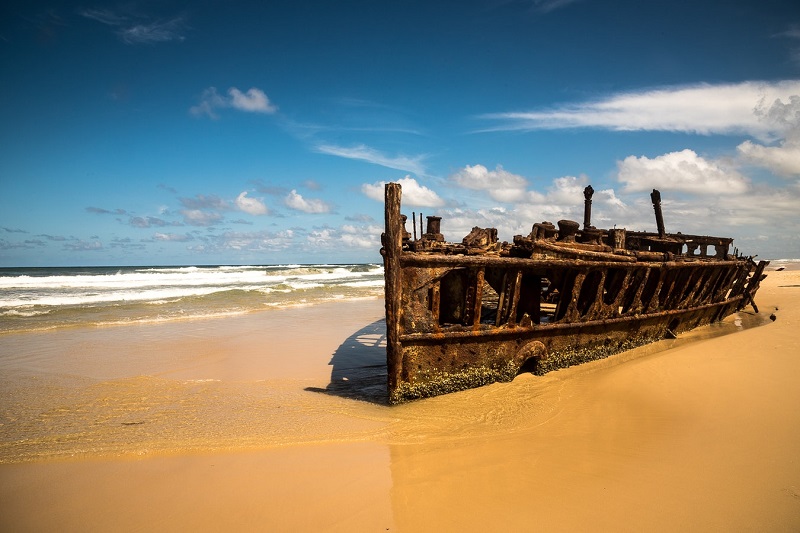Improving maritime security in the Asia–Pacific
Posted By John Coyne and Isaac Kfir on January 16, 2019 @ 06:00

Over recent years, the Asia–Pacific maritime security environment [1] has become increasingly complex. Transnational serious and organised crime in the maritime domain (including illegal, unreported and unregulated fishing; piracy; and trafficking of weapons, drugs and people), terrorism and an increasingly assertive Chinese maritime strategy are generating further complexity.
The evolving strategic challenge hasn’t gone unnoticed in Australia, or in its Asia–Pacific neighbours. While countries with the means have invested heavily in their navies, others have focused more on developing their coastguards [1]. More recently, the dynamic operating context has been the catalyst for enhanced bi- and multilateral maritime cooperation.
Unsurprisingly, the region’s focus on civil–military maritime security is increasing the demand for more comprehensive and coordinated maritime domain awareness (MDA) (see here [2], here [3] and here [4]) across the Asia–Pacific.
However, while many commentators have highlighted the need for greater regional cooperation on MDA, it has proved difficult to reach agreement on how to turn that idea into a fully-fledged multilateral arrangement.
Some of our policy contacts around Canberra have suggested to us that the European Union’s Maritime Analysis and Operations Centre [5] – Narcotics (MAOC–N) in Lisbon offers a viable model for improving regional cooperation.
The MAOC–N was established [5] in 2006 under the auspices of the EU by seven countries (Portugal, Spain, the United Kingdom, Ireland, France, the Netherlands and Italy) as a multilateral forum for combating and countering drug trafficking from the Cape of Good Hope to the Norwegian Sea.
The centre is an important part of EU law enforcement efforts in coordinating maritime and aviation intelligence. The investment has paid dividends in disrupting piracy [6] and illicit drug flows.
The MAOC–N’s success has been underpinned by the depth and breadth of European cooperation and the EU’s well-developed organisational structure. Unfortunately, neither of those conditions exists in the Asia–Pacific in general or in ASEAN more specifically.
Because of its complex geopolitical context, ASEAN’s framework for inter- and intraregional and global sharing of law enforcement information and intelligence is convoluted and often difficult to navigate.
ASEAN operates a range of formal and informal networks that exchange tactical, operational and strategic information. In most cases, the frameworks that promote this work are supported by long-term interpersonal and interagency relationships of trust.
These frameworks collectively form a complex web of arrangements. The characteristics that make relationships of trust and sharing possible in ASEAN have also encouraged the development of multiple channels of communication. Although they don’t necessarily generate results efficiently, these multiple channels are effective at providing operational agencies with opportunities to exchange information.
The diverse and often compartmentalised system that is law enforcement intelligence-sharing in ASEAN brings with it more than a few risks and challenges. The lack of a central repository imperils distributed access to knowledge, and the lack of a clear information architecture increases the risk of duplicative reporting and feedback loops.
At the 2010 ASEAN Regional Forum Inter-Sessional Meeting on Maritime Security, the US government sought to address these challenges by proposing the establishment of the ASEAN Regional Forum Transnational Threat Information-sharing Centre [7] (ATTIC). Despite the potential benefits presented by ATTIC, a lack of ownership among ASEAN member states has seen the idea languish in a policy limbo.
Two existing mechanisms, the Regional Cooperation Agreement on Combating Piracy and Armed Robbery against Ships in Asia (ReCAAP) and the Information Fusion Centre to the ASEAN regional forum, offer opportunities for increased MDA cooperation.
ReCAAP is a regional government-to-government agreement to promote cooperation against piracy and armed robbery. It has 20 members, including North, South and Southeast Asian countries; Australia; the UK; and the United States.
ReCAAP’s Information Sharing Centre in Singapore facilitates communication between regional authorities and the maritime community and enables timely and accurate classification and analysis of incidents. The centre’s reporting and analysis assist coastal states to take law enforcement actions, and shipowners as well as ship masters to adopt risk-mitigation measures.
The Information Fusion Centre is a regional maritime security centre hosted by the Singaporean navy. The centre facilitates information sharing and collaboration between its partners and provides actionable information to regional and international navies, coastguards and other maritime agencies. It covers the full range of maritime security threats and incidents, including piracy, armed robbery at sea, weapons proliferation, maritime terrorism, and contraband and drug smuggling. It also hosts various multilateral information-sharing portals and platforms in support of regional and international frameworks.
Many an Australian official might be tempted to promote the development of a new regional MDA mechanism or support ATTIC. However, the creation of an Asia–Pacific MAOC-type arrangement is a risky proposition. Putting aside the language, technical, trust and geopolitical hurdles, an Asia–Pacific MAOC may simply add further bureaucracy to the region’s already complicated information-sharing arrangements. Australia and its partners may find more utility in making further investments in ReCAAP’s Information Sharing Centre and the Information Fusion Centre given their successes to date.
Article printed from The Strategist: https://www.aspistrategist.org.au
URL to article: https://www.aspistrategist.org.au/improving-maritime-security-in-the-asia-pacific/
URLs in this post:
[1] maritime security environment: https://www.aspi.org.au/report/mice-roar
[2] here: https://asean.usmission.gov/shared-maritime-domain-awareness-workshop/
[3] here: https://www.rsis.edu.sg/wp-content/uploads/rsis-pubs/WP141.pdf
[4] here: https://thediplomat.com/2018/09/maritime-security-cooperation-in-the-south-china-sea-sailing-in-different-directions/
[5] European Union’s Maritime Analysis and Operations Centre: http://www.emcdda.europa.eu/about/partners/maoc
[6] piracy: http://www.theportugalnews.com/news/portugal-navy-avoids-piracy-attacks-in-venezuelas-waters/46961
[7] ASEAN Regional Forum Transnational Threat Information-sharing Centre: http://aseanregionalforum.asean.org/files/References/ARF%20Information%20Paper/Highlights%20of%20ARF%20Cooperation%20in%20Maritime%20Security%20as%20of%20March%202018.pdf
Click here to print.